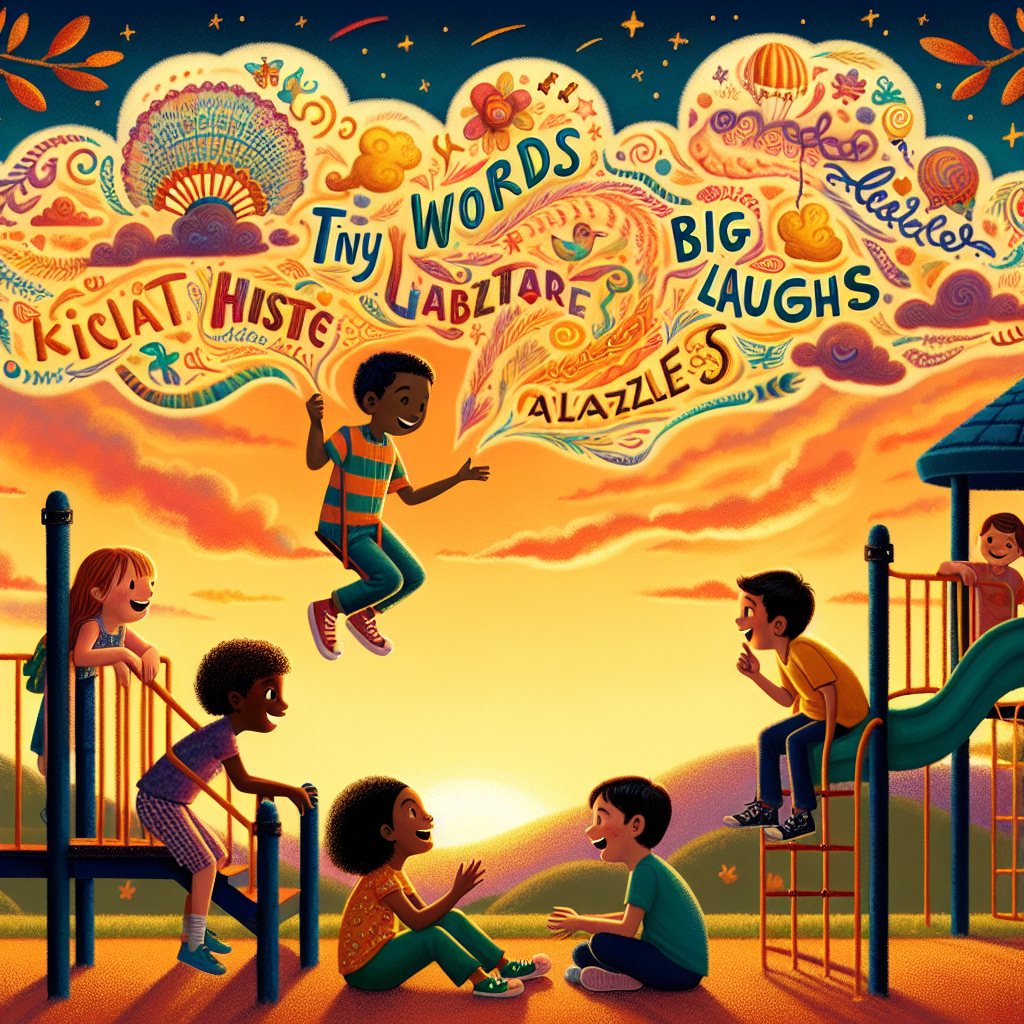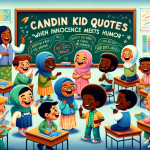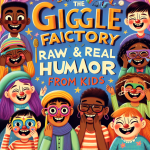Tiny Words, Big Laughs: What Kids Say That Dazzles Us

Table of Contents
- Table of Contents
- The Fascination of Child Language Development
- Hilarious Mispronunciations and Their Charm
- 1. "Bapple" Instead of "Apple"
- 2. "Aminal" Instead of "Animal"
- 3. "Pasketti" Instead of "Spaghetti"
- Innocent Wisdom: Dots of Truth in Child Speak
- 1. Childlike Honesty
- 2. Questions That Challenge Adults
- 3. Adorable Logic
- Related Articles:
- Cultural Reflections in Children’s Language
- 1. Media Influence
- 2. Regional Dialects
- 3. Cross-Cultural Expressions
- Encouraging Language Development
- 1. Reading Together
- 2. Encouraging Expressive Play
- 3. Being Patient and Encouraging
- Related Articles:
- Conclusion: Embracing the Joy of Child Language
Children have an extraordinary way of viewing the world. Their innocent observations and interpretations often result in moments of unexpected hilarity. In this article, we will explore the linguistic gems that emerge from the mouths of children, delving into their charming aphorisms, mispronunciations, and the innocent wisdom that can leave parents and educators in stitches.
Table of Contents
- The Fascination of Child Language Development
- Hilarious Mispronunciations and Their Charm
- Innocent Wisdom: Dots of Truth in Child Speak
- Cultural Reflections in Children’s Language
- Encouraging Language Development
- Conclusion: Embracing the Joy of Child Language
The Fascination of Child Language Development
Language development in children is a fascinating process. According to the American Speech-Language-Hearing Association (ASHA), children typically start to say their first words around the age of one and can hold conversational exchanges by the age of three. This developmental sequence not only highlights their cognitive growth but also reveals the unique ways children communicate.
The simplicity of children’s language—often marked by gaps in vocabulary and grammar—allows them to express complex ideas in unbelievably amusing ways. Parents often find themselves laughing at the whimsical phrases their kids create, showcasing the imaginative capabilities of young minds.
Hilarious Mispronunciations and Their Charm
One of the most delightful aspects of child language is the plethora of mispronunciations they make. These errors, while often frustrating to parents trying to correct them, can be outright hilarious. Here are a few examples that have tickled many a parent’s funny bone:
1. "Bapple" Instead of "Apple"
This classic mix-up showcases a child’s struggle with consonant blends and can spark joy during snack time. It’s a reminder of the simplicity and beauty in miscommunication.
2. "Aminal" Instead of "Animal"
This adorable twist invites a conversation about the importance of all creatures, big and small. It can lead to profound discussions about nature despite the comical pronunciation.
3. "Pasketti" Instead of "Spaghetti"
This charming mispronunciation often elicits laughter during family meals. It highlights a child’s effort to articulate complex sounds, showcasing their growth even amidst errors.
Research published in the journal Developmental Psychology demonstrates that such linguistic creativity is essential for cognitive and social development. Children learn their environments through language, making even mispronunciations a vital part of their growth.
Innocent Wisdom: Dots of Truth in Child Speak
Beyond the laughter, children often articulate profound truths that adults might overlook. Their straightforward observations can provide insight into complex issues and remind us of the beauty in simplicity.
1. Childlike Honesty
Kids possess an unfiltered lens through which they see the world. For example, a child might succinctly summarize a family gathering by saying, “There are a lot of hugs but no food.” Such observations can often hold kernels of truth and humor.
2. Questions That Challenge Adults
Children have a knack for asking the right question at the wrong time—like, “Why is the sky blue?” or “Where does the sun go at night?” These inquiries challenge adults to think critically and lead to engaging conversations that may reveal deeper truths.
3. Adorable Logic
Their logic can be both amusing and insightful. A child might reason that since dogs and cats are pets, a fish must be a "swimming pet," helping them understand classification in a unique way that puts a smile on the faces of those around them.
Related Articles:
For further reading on the cognitive development of young minds, check our article on Child Development Milestones.
Cultural Reflections in Children’s Language
Language is a cultural artifact, and children often reflect their environments in their speech. From popular TV shows to local slang, kids assimilate language from various media, impressively weaving it into their daily conversations.
1. Media Influence
Children often mimic the dialogue of their favorite characters, leading to humorous phrases that might not quite fit the context. For example, saying, “Do it for the ‘Gram!” after witnessing a family member take a photo can be both amusing and an excellent conversation starter about social media trends.
2. Regional Dialects
Incorporating regional phrases into their vocabulary can also lead to amusing outcomes. For instance, a child might say, “You all come here now,” showcasing the local dialect they’ve absorbed in their upbringing.
3. Cross-Cultural Expressions
Children growing up in multicultural environments may blend terms from different languages, creating new, delightful phrases. This not only encourages laughter but also appreciation for diverse linguistic backgrounds.
Encouraging Language Development
Parents and educators play a crucial role in fostering healthy language development in children. By providing children with diverse vocabulary and conversational topics, we can cultivate their communicative abilities.
1. Reading Together
Engaging in shared reading experiences can significantly impact a child’s vocabulary acquisition. Books that explore various themes can introduce new words and phrases that children can incorporate into their speech.
2. Encouraging Expressive Play
Role-playing allows children to experiment with words and phrases they encounter in real life. Whether imitating an animal or recreating a grocery store scene, these play scenarios give them space to play with language.
3. Being Patient and Encouraging
Correcting mispronunciations gently and with humor can motivate children to continue experimenting with language without the fear of making mistakes. Providing positive reinforcement can inspire further conversation.
Related Articles:
Learn more about effective parenting techniques in our resource on Positive Communication with Children.
Conclusion: Embracing the Joy of Child Language
In sum, the whimsical world of child language offers a treasure trove of entertainment, insight, and inspiration. Children’s unique ways of expressing themselves not only provide laughter but also reflect deeper truths that can teach us about life’s complexities.
By embracing their mispronunciations and amusing phrases, we can cultivate a nurturing environment that fosters their language development and encourages endless conversations. From funny anecdotes to innocent wisdom, the words of children truly dazzle us—proving every laugh is an opportunity to connect, learn, and grow.
Through this exploration, we celebrate the innocent perspective of children and the laughter that follows, reminding us all to cherish these fleeting moments of joy.
Latest Posts
You Might Also Like

Lorem ipsum dolor sit amet, consectetur adipiscing elit. Ut elit tellus, luctus nec ullamcorper mattis, pulvinar dapibus leo.
TOP NEWS
Copyright © 2025 FunnyShowStreaming.site | All rights reserved.



















Comments are off for this post.